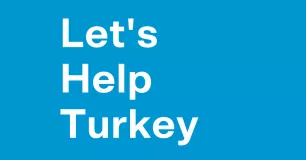
As one healthcare expert bluntly put it in a CNN report, investors are getting interested in digital health initiatives for low-income patients for a simple reason – there are so many of them. But regardless of the motivation, developing digital monitors and other tools to help under-served citizens who have trouble getting to or paying for medical care could save lives and that's the bottom line that matters.
As Barbara Feder Ostrov of Kaiser Health News points out in her CNN post, a wearable fitness band isn't much use if you're homeless and healthy eating apps aren't all that practical for someone who struggles to buy groceries.
"There is a disconnect between the problems of those who need the most help and the tech solutions they are being offered," Veenu Aulakh told Feder Ostroy. Aulakh is executive director of an Oakland, CA-based nonprofit that works to improve health care for under-served patients.
But because of the sheer number of low-income people with chronic diseases and critical healthcare challenges, and the increasing number of them with smartphones, the digital healthcare industry and its investors and innovators are starting to pay more attention.
Simple to elaborate
Some of the technologies are both simple and cheap like Text4baby, a free cell phone text messaging service for pregnant women and new moms, providing tips on everything from prenatal care to breastfeeding help to car seat safety timed with their delivery date. Or the loaner digital devices Petaluma Health Center clinics in Sonoma County, CA give to patients after hospitalization so they can stay in touch and avoid complications.
On the other extreme is Prevent – a diabetes and heart disease prevention program that San Francisco-based Omada Health modified for under-served populations, adding a Spanish version and reducing the reading level. Omada is running year-long clinical trials in California and Washington. The Prevent program includes a digital scale, an online peer network and access to counseling and a personal health coach. Participants only need an hour a week of Internet access.
Digital snake oil?
Still, the explosion of digital health products in general doesn't sit well with everyone – including American Medical Association CEO Dr. James Madara. According to Forbes, he warned in a recent speech that many of them don't allow physicians to communicate effectively with patients.
"From ineffective electronic health records, to an explosion of direct-to-consumer digital health products, to apps of mixed quality, this is the digital snake oil of the early 21st century,"' he said.
More on this topic…
Investing in upward mobility: 6 billion-dollar bets
Intel video: Advantages of telehealth
Qualcomm case study: Empowering communities to promote diabetes care and prevention through 3G technologies
#CCEOST#



